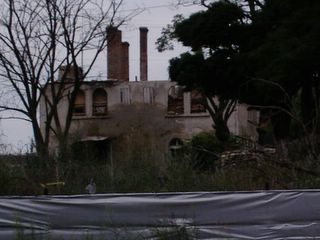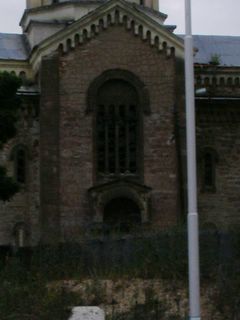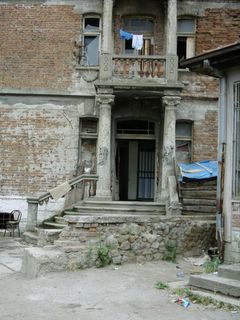I decided to officially archive this blog on the day my DPhil was confirmed. But I have waited for the electronic publication of my thesis, Interrogating Archaeological Ethics in Conflict Zones: Cultural Heritage Work in Cyprus, to announce the archiving. From now on, I will blog at Conflict Antiquities.
Saturday, August 27, 2011
Friday, December 09, 2005

South Mitrovice building 25: "Motel Mitrovica". Having walked all around the centre, having walked past "[the] hotel" several times, thinking it might be the place I was looking for, but deciding it couldn't be and having been given directions several times, eventually I returned to the hotel and it was indeed Motel Mitrovica.
[Corrected on the 14th of January 2007.]
I had thought that it might've been taken down because it was the Serbian spelling, as in Peje, extremists had smashed the sign for the Hotel Metohija (Hotel of the Land of the Monasteries) and in Decan, they had spray-painted out the Serbian spelling on the sign as you enter the town, because they deemed them unacceptable.
Thankfully, however, Anonymous has corrected me that this is:
"Not true, Mitrovice is the name in Albanian but it can also be called Mitrovica. So the spelling is correct. When asked which city are [y]ou from, you can not say I'm from Mitrovicë, so we say I'm from Mitrovica."So, I don't know why it was there, but there's no reason to assume it was related to the other cases that I initially interpreted it in light of.
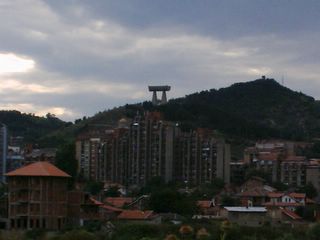
South Mitrovice building 24: the arch on the hillside looming over Mitrovice/Mitrovica is a Communist monument, erected under Marshal Josip Broz Tito, which I thought was a monument to victory in the Second World War, but which some others have said was a monument to miners and mining after the war. Initially, I'd thought it could be a water tower or reservoir, but luckily the Albanian youths I met corrected me.
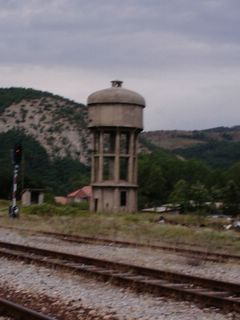
South Mitrovice building 22: the Albanian youths showing me the sights/sites of south Mitrovice walked me along the disused railway line, showing me this. I can't remember, however, what this was, though I think it may have been a water tower; I don't believe it was a Communist monument, as I don't think the architectural design would have been appropriate.
Subscribe to:
Comments (Atom)


